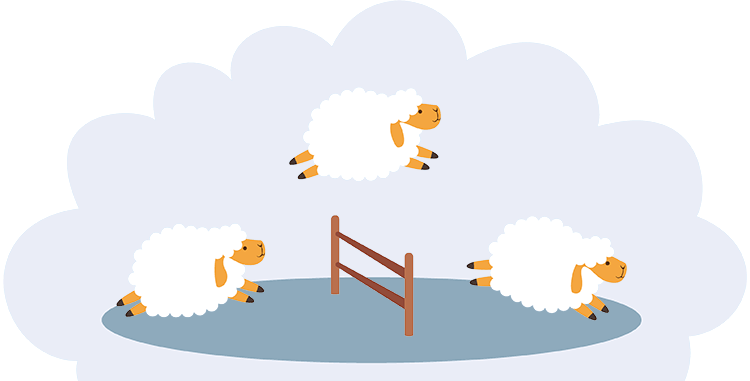Central sleep apnea
Central sleep apnea syndrome (Cheyne-Stokes breathing) very often gives a clinical picture similar to obstructive sleep apnea syndrome . With this violation, there are also attacks of stops in breathing – apnea, but they are observed not from time to time, but cyclically.
What does Cheyne-Stokes breathing look like?
It is characterized by alternating periods of apnea with periods of gradually increasing frequency and amplitude of respiratory movements. The latter vary from shallow, slow, barely noticeable chest movements to deep, noisy, accelerating, labored breathing. Then the inhalations and exhalations again become less intense, up to a temporary cessation of breathing. After that, the described cycle is repeated again.
The main diagnostic sign of pathological Cheyne-Stokes respiration is the absence of respiratory movements of the abdominal wall and chest during an episode of apnea.
Causes and risk factors
The reason for the development of central apnea is the absence of impulses from the respiratory center, which disrupts the work of the contractile muscles of the chest and abdomen.
Cheynstokes breathing is induced by some factors that disrupt the functions of the parts of the brain that regulate breathing:
- epilepsy;
- strokes;
- viral and bacterial infections;
- hypoventilation of the lungs of central origin;
- chronic respiratory diseases;
- low blood sugar (hypoglycemia);
- prematurity in a child;
- heart rhythm disturbances;
- medicines;
- electrolyte disorders;
- increased content of bilirubin in the blood serum;
- sepsis, tumors;
- intracranial and spinal injuries;
- broncho-pulmonary dysplasia;
- anemia.
Symptoms
Periodic delays and pauses in breathing during sleep lead to a decrease in blood oxygen saturation and numerous awakenings of the patient during the night, forming a clinical picture similar to obstructive sleep apnea syndrome.
Diagnosis of the disorder and its treatment
Apnea of the central type is relatively rare. Before its diagnosis, the patient must exclude OSA. If there is any doubt about the diagnosis, a polysomnographic study should be performed, and in difficult cases, a trial course of CPAP therapy should be performed. It eliminates the syndrome of obstructive sleep apnea, and has almost no effect on central sleep apnea.
Central sleep apnea is much less treatable than OSAS because the causes of this condition are chronic or due to severe trauma.
Stimulation of the respiratory center with medication does not bring the desired results. More promising is the method of assisted ventilation with constant control of pressure and volume. In some cases, implantation of an electrical diaphragm stimulator gives good results . In this case, patients gain independence from a stationary respiratory apparatus and the need to use means to cleanse the respiratory tract.
Sleep apnea syndrome of the central type requires a highly professional approach to treatment; its therapy should be carried out in institutions with modern diagnostic equipment (multifunctional polysomnograph ), and performed by specialists with experience in treating such diseases. The Medical Center can be recommended as such a treatment center. sleep at the Rehabilitation Clinic in Khamovniki, which specializes in the diagnosis, treatment and prevention of sleep disorders .

